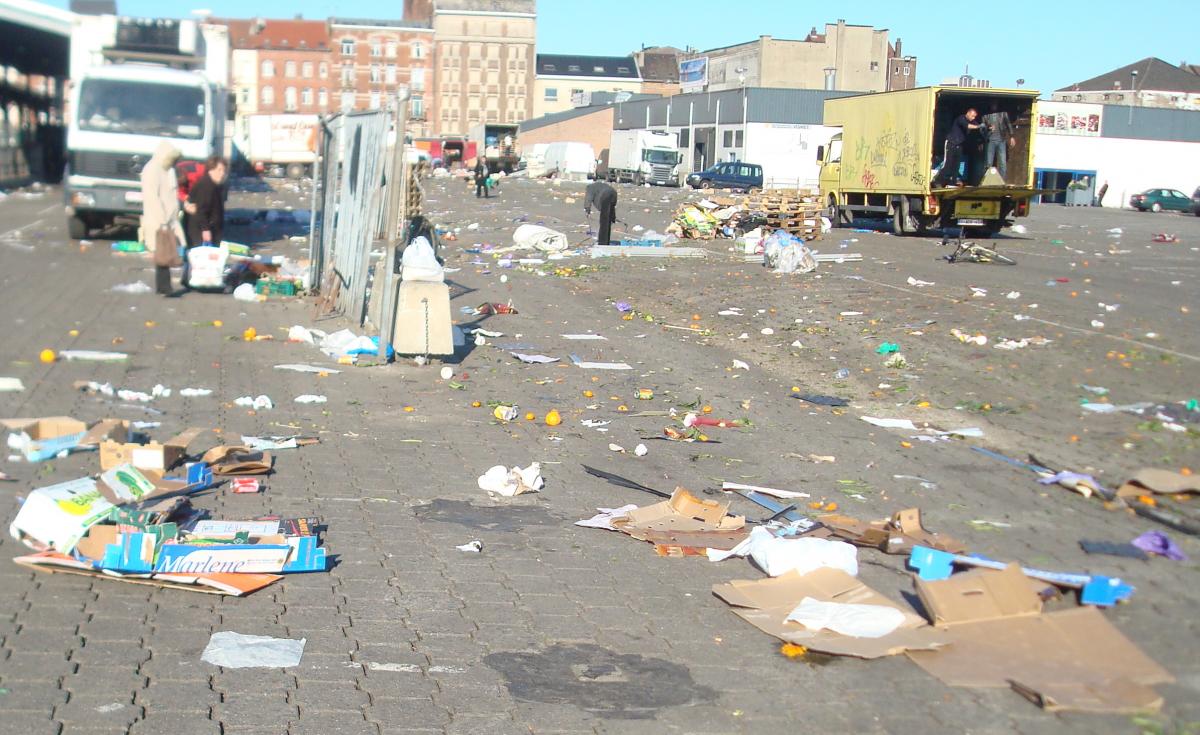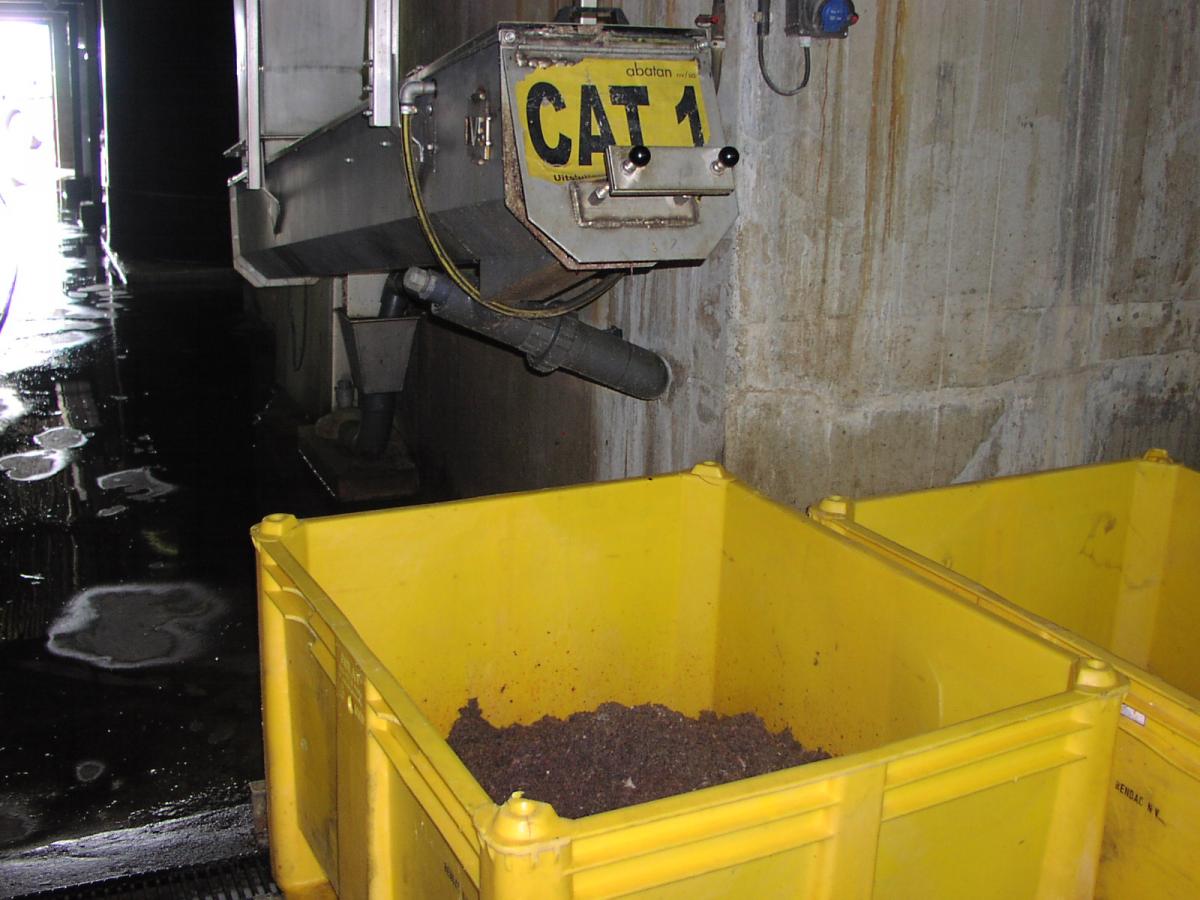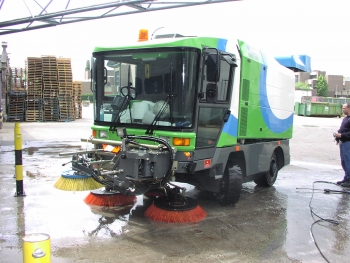Everyone is talking about it and in the current climate, anyone who fails to be a sustainable manufacturer, consumer, etc., risks being sidelined or singled out for criticism.
At Abattoir, we have a longstanding sustainability policy, extending to every aspect of our activities. Waste treatment only forms a small part of this, but it is worth examining this aspect of our activities in greater detail. You will note that our activities also create a great deal of additional employment as part of a “chain” of operations involving companies that do not seem to have an obvious connection.
Two separate systems
The waste produced at our side can generally be divided into two main categories: market waste and meat offal. Both categories can be treated in accordance with three general parameters: the regulatory aspect, rules imposed by the FAVV (the Belgian Federal Agency for the Safety of the Food Chain); the environmental aspect, making recycling a priority over incineration; the economic aspect, the cost and/or the ROI.
 Market waste
Market waste
Market waste can in turn be subdivided into pallets, cardboard and paper, and vegetable and fruit waste. Paper and cardboard are usually thrown into a container before being compressed into bales and recycled by Recupa. Bales that are unsuitable for recycling go to an incinerator in Neder-over-Heembeek, while the remainder are compressed into larger bales and taken to other paper factories to be turned into paper pulp for the manufacture of recycled paper (mostly paper or cardboard intended for packaging). Vegetable and fruit waste ends up in a designated container that we make available. On average, around six tons are collected every weekend. Vanheede Environment Logistics carries out the collections and uses the waste to produce biogas, which in turn generates electricity (green energy) within the company. Unsold fruit and vegetables are recupareted by Collectmet, with the aim to save food and to reduce the market waste.
 Meat offal
Meat offal
The FAVV requirements mean that meat offal is subdivided into three categories. Category one contains biological risk materials, such as bone marrow and bovine heads declared unfit for consumption. These are destroyed through “rendering”, a process involving grinding and adding steam, resulting in two residual fractions, namely fat and animal meal (protein). The fat is used as a fuel to dry the animal meal (at up to 1500°), which is in turn used as a fuel in the cement industry. The second category contains material that is also unsuitable for animal or human consumption, without posing an immediate danger. It is recycled for additional safety. This applies to manure and the stomach and bowel contents of slaughtered animals. This is recycled into biogas.  The third category is waste unsuitable for human consumption but used to produce pet food, among other things. It is good to know that we even recycle pig bristles! Following slaughter, pig carcasses are given a warm bath to soften the bristles, before a stiff brushing action is used to recycle the loose bristles. The remaining bristles are burnt off. Bristles are collected by Rendac and turned into meal for chicken feed. The amino acids in the meal boost the growth and density of chicken feathers.
The third category is waste unsuitable for human consumption but used to produce pet food, among other things. It is good to know that we even recycle pig bristles! Following slaughter, pig carcasses are given a warm bath to soften the bristles, before a stiff brushing action is used to recycle the loose bristles. The remaining bristles are burnt off. Bristles are collected by Rendac and turned into meal for chicken feed. The amino acids in the meal boost the growth and density of chicken feathers.
Even blood is “business”
Bovine blood belongs to waste category one, while pig blood is divided into blood “fresh from the wound” and waste blood (blood throughout the carcass). The fresh blood is suitable for human consumption and is used in the production of sausages, pates and other meat products, in addition to uses as a dye, in medicines, glue, etc.
 Waste water treatment
Waste water treatment
We have our own autonomous installation for water treatment, which is used to purify all the waste water from the site. Waste water is filtered through a complicated system of pumps and strainers, ending up with two components: screenings and waste water. The screenings are dehydrated and collected by Rendac.
 The waste water goes to an 800m3 tank called “biology”, where fatty substances present in the water are broken down by bacteria. By adding compressed air (oxygen), other bacteria degrade any organic matter remaining in the water; a process which takes approximately 11 hours. After this procedure, the bacteria are left to sink to the bottom and the treated water is sluiced to the public sewage system. The sediment (bio-sludge) continues to be treated separately (by coa- gulation, thickening and centrifuging) before it is finally collected by Indaver for incineration in its furnaces in Antwerp.
The waste water goes to an 800m3 tank called “biology”, where fatty substances present in the water are broken down by bacteria. By adding compressed air (oxygen), other bacteria degrade any organic matter remaining in the water; a process which takes approximately 11 hours. After this procedure, the bacteria are left to sink to the bottom and the treated water is sluiced to the public sewage system. The sediment (bio-sludge) continues to be treated separately (by coa- gulation, thickening and centrifuging) before it is finally collected by Indaver for incineration in its furnaces in Antwerp.
Other sustainable “interventions”
Waste oil from engines and reduction boxes is collected by Recupoil and processed into lower-grade reusable oil or into additives for heating oil. TL lamps are collected by Shanks and recycled.
Finally, there is also this: heat generated by the ammonia compressors refrigerating the cold stores is used to heat incoming cold water. So we are literally blowing hot and cold!
As you can tell, our business not only provides a great deal of sustainable employment on our own site, but also for quite a few sidelines elsewhere. In addition, thanks to our approach, we can definitely claim that we are fully taking up our corporate responsibility within the densely populated neighbourhood where we operate, by dealing with our surroundings in an environmentally-friendly way.

